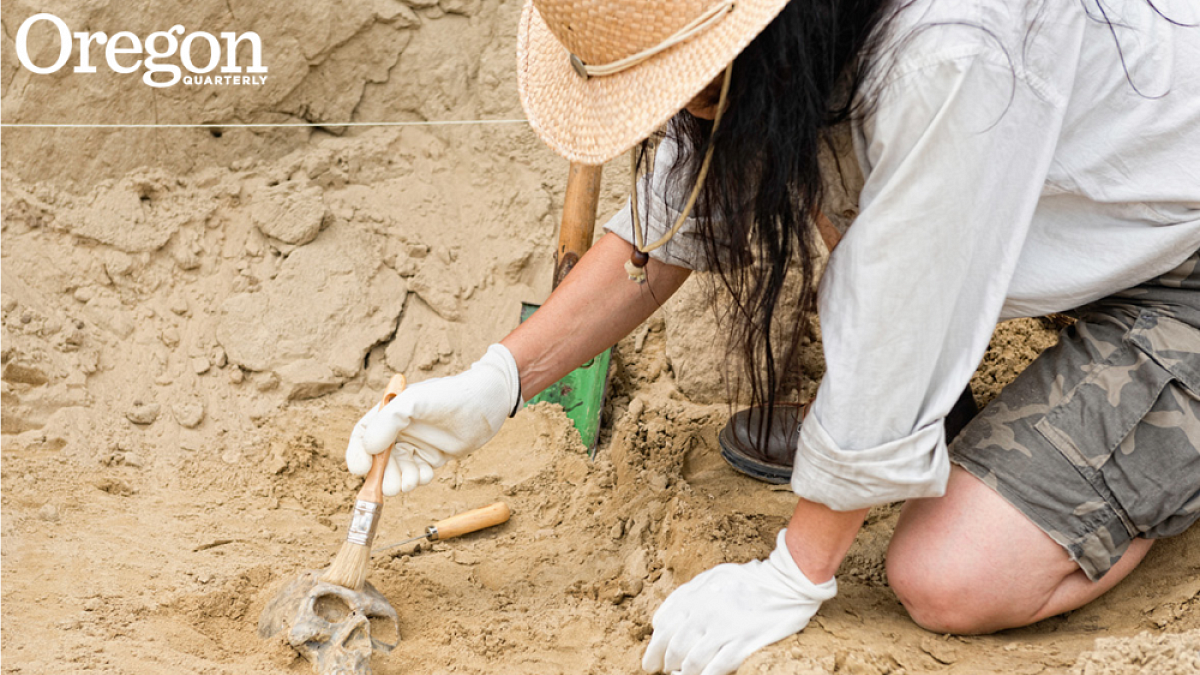Mohamed Siad Barre was a brutal Somalian dictator who, in 1988, authorized the bombing of his own country to wipe out the Isaaq tribe and quell opposition to his authoritarian rule. His soldiers killed between 50,000 and 100,000 civilians, causing what was then the world’s largest refugee crisis. Air raids destroyed 90 percent of the city of Hargeisa, giving it the nickname “the Dresden of Africa.” Tribal members fleeing to neighboring Ethiopia were gunned down by fighter jets.
Thirty years after the genocide, with a little help from a University of Oregon instructor and a popular television show, Winsome Lee arrived in Somalia to recover the bodies Barre’s troops left behind.
RELATED LINKS
Lee, BA ’12 (philosophy), was born in Hong Kong in 1989, growing up among tranquil islands and vibrant fishing villages a world away—literally and figuratively—from the fighting in Somalia.
She moved to America in 2009 for collegiate study in Washington, then transferred to the UO. Although philosophy was her major, adding anthropology as a minor proved pivotal to her future.
Instructor Felicia Madimenos, PhD ’11 (anthropology), opened a forensic anthropology course with an icebreaker question about an Emmy-nominated crime drama. That question caught Lee’s attention and changed the trajectory of her life—which, in turn, would eventually change the lives of countless people worldwide.
“She asked us if we watched Bones at all,” Lee says. “Then she told us, ‘Those stories, those techniques, and all that science is somewhat true.’ Then I started looking into it, and the more I got to know or understand forensic anthropology, I found out that their values were really aligned with my own values.”
Forensic anthropology is the solving of criminal cases by applying skeletal analysis and techniques in archaeology to the study of human remains.

During her first year in the field of forensic anthropology, she worked on more than 300 sets of bones. In London, she helped clean the personal effects of 72 people who died in the Grenfell Tower fire, later returning the effects to survivors and families. In New Guinea, she worked with an airline to provide insurance companies with medical updates about survivors of a plane crash.
In East Timor, she excavated, catalogued, and stored the unidentified remains of genocide victims.
In March 2018 Lee went with Equipo Peruano de Antropología Forense (EPAF) to the Republic of Somaliland—a self-declared state in northwest Somalia unrecognized by the United Nations—to help repatriate the remains of Isaaq war victims.
“We started every day with some digging, basically getting our hands dirty digging in the mud, trying to recover the bones, the dead bodies, the skeletons,” Lee says. “Then we had a better picture of the context of how many bodies were in a pit.”
Once the bones were removed, they were taken back to the lab for testing. As Lee puts it, the deceased speak to her through their bones: skeletal remains can tell her as much about the lives people led as they can about the way they died.

For Lee, days spent digging bodies out of dusty, deep pits and analyzing their remains on sterile metal tables is worth it, because she is providing closure to families. She feels her efforts make a difference in a world that can seem hopeless and cruel.
“There are moments that I feel very upset by what humanity did to our own kind,” Lee says. “It’s really ugly. But at the same time, with our work, when I’m working with my team and my colleagues, they show me how beautiful humanity is. The beauty of humanity is greater than the ugliness of it.
“Through our work, I hope that we can show we are one humanity all the time, and we should always care about each other without caring about race, religion, or where they’re from. At the end of the day you’re just stripped down to a plain skeleton, so just live your life and enjoy each moment.”
—By Damian Foley, University Communications
Photos courtesy of Winsome Lee


